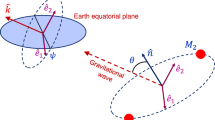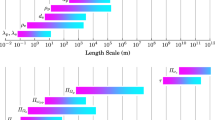Abstract
A γ-burst monitoring network, involving an eccentric satellite and two interplanetary spacecraft, is planned for completion in 1977. the satellite in earth orbit will have 2 sets of scintillation counters with moderate spatial resolution, covering an energy range of 20 keV-1 MeV, and viewing about 2π steradians. Each of the interplanetary probes will have one set of scintillation counters. The intersatellite timing accuracy will be about 10 ms, which will permit the determination of the arrival direction withon about 5 are min. Special attention is given to fine time resolution and the detection of bursts with relatively long onset times.
Similar content being viewed by others
References
Albernhe, F., Cassignol, M., Cotin, F., Douladé, C., Talon, R., and Vedrenne, G.: 1975,Nucl. Inst. Methods 129, 295.
Melioransky, A. S., Pissarenko, N. F., Shamolin, W. M., Likin, O. B., Talon, R., Vedrenne, G., and Gourdon, B.: 1975,Astron. Astrophys. 41, 379.
Author information
Authors and Affiliations
Rights and permissions
About this article
Cite this article
Niel, M., Hurley, K., Vedrenne, G. et al. The French-Russian 3 satellite γ-burst experiment. Astrophys Space Sci 42, 99–102 (1976). https://doi.org/10.1007/BF00645531
Received:
Issue Date:
DOI: https://doi.org/10.1007/BF00645531




